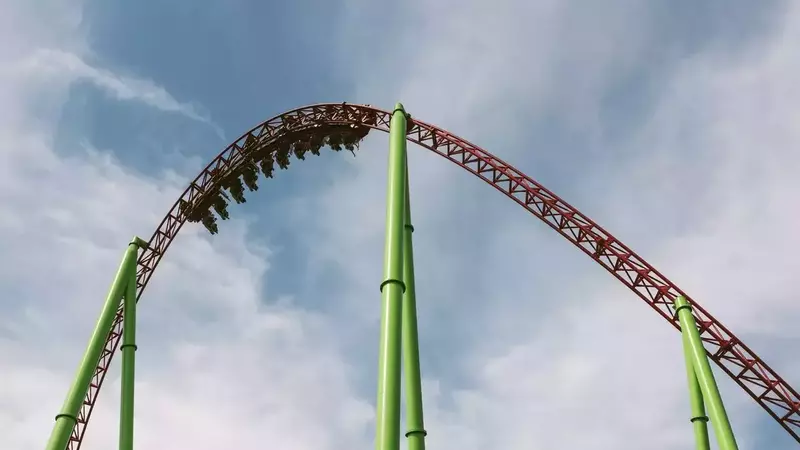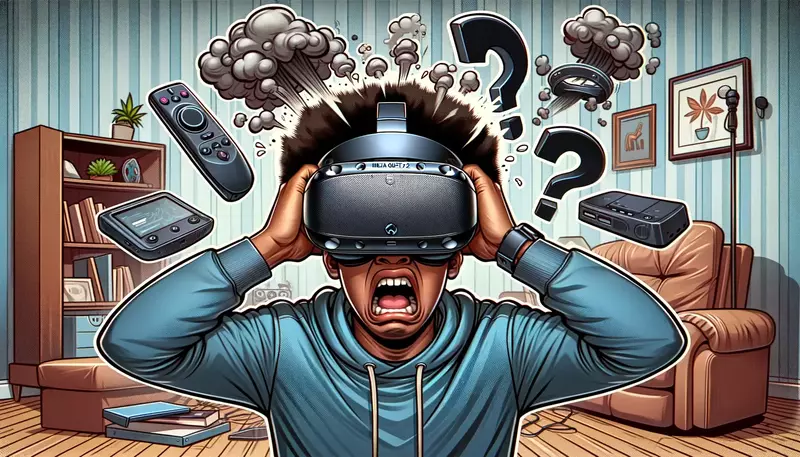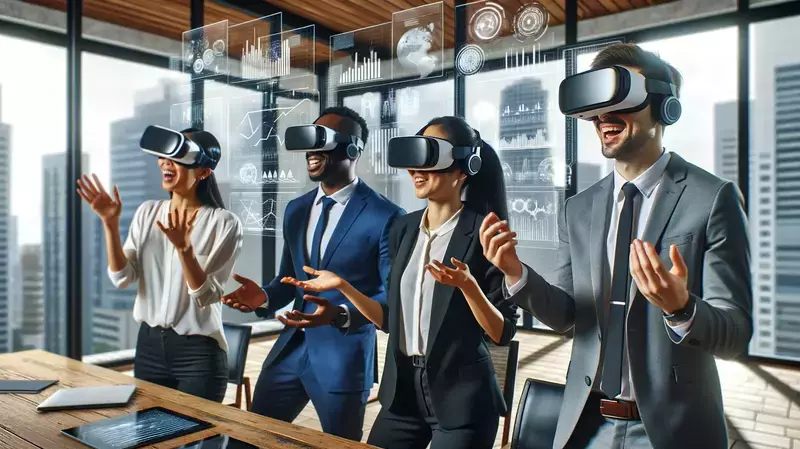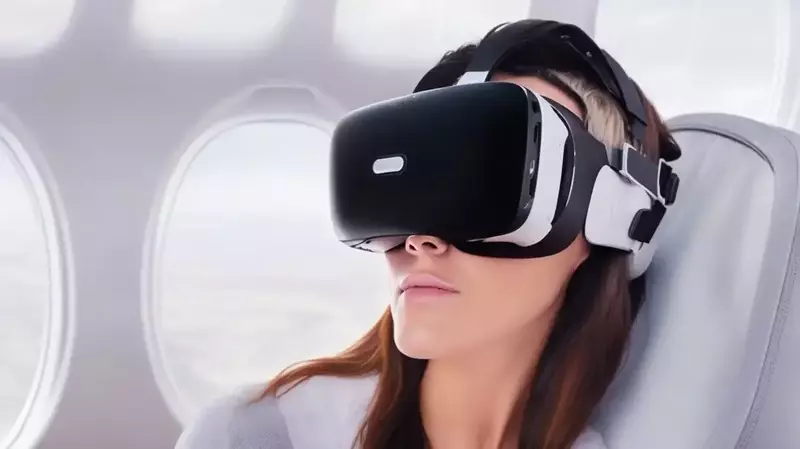This site contains affiliate links to products, and we may receive a commission for purchases made through these links.
Six Flags has been a popular theme park destination for over 50 years. The company has developed a wide range of rides and attractions during that time. But do Six Flags have VR Rides in 2022?
VR coasters have been experimented with by parks and designers for several years, but the concept really gained root in 2016 when Six Flags began offering VR as an option at many of its parks. However, the VR coasters had drawbacks, and none of the Six Flags parks presently offers any VR rides.
In this article, I’ll explain why Six Flags no longer has VR rides and where you can find a VR coaster in 2022.

What is a VR Coaster? (Explained)
With a VR headset, you can play a variety of roller coaster games. The idea behind a VR coaster, on the other hand, is to put passengers on actual roller coasters while wearing virtual reality goggles.
A VR coaster is a type of amusement ride that uses virtual reality technology to create a simulated environment. Riders sit in specially designed chairs and use headsets to experience the ride.
VR coasters typically use 360 degrees of motion, making them more immersive than traditional amusement park rides.
If you want to take a look at how it works, check out this video here:
Why did Six Flags discontinue VR Rides?
There are several reasons why Six Flags discontinued VR rides.
1. Problems with logistics and cost
The most significant disadvantage is that VR coasters can be an operational and logistical nightmare for parks, and thus for their visitors.
One of the most important criteria for an attraction is its throughput or the number of people who can ride it every hour. The higher an attraction’s capacity, the more tourists the park can handle in total, and the more money it can make.
In addition, tourists are happier when lines are short (or move rapidly). The time it takes to distribute VR headsets, get riders properly outfitted and synced with the system, collect the VR headsets after the ride, and clean them between rides reduces throughput by about half.
In order to distribute the headsets, assist riders in adjusting them, and do everything else associated with operating a VR coaster, parks needed to devote a lot more workers which increased the cost.
For Six Flags, that was essentially a deal-breaker for the concept.
2. Problems with latency and nausea
With VR coasters, latency may ruin the entire experience. The word refers to the time lag between the activity that passengers observe in their VR headsets and the motion they feel on the coaster.
Passengers may endure discomfort, even nausea if the images do not properly match the coaster ride.
There have been stories of visitors having a horrible time on a VR coaster because the programming did not sync with the ride. Throughout the entire ride, they saw the graphics that they were intended to experience when they were halted in the station.
The connection disrupted their vestibular systems, causing extreme nausea.
READ MORE! Can a 10-Year-Old Use VR? (Solved!)
3. Other Software Issues
Other technical and practical issues may arise. Points of reference, for example, might alter during a ride; even if riders are facing forward, their virtual perspective may shift a few degrees to the left or right, which can be disturbing.
Headsets sometimes fail in the middle of a journey, leaving passengers in the dark with blank screens.
Because of the tremendous speeds and forces delivered by coasters, as well as the issues inherent in employing one-size-fits-all headsets for passengers, the equipment can come loose and even fall off of passengers during rides.
4. Problems with Image Quality
While VR technology has evolved much since 2016, the imagery was frequently crude, low-resolution, dark, grainy, or had any number of other flaws that made it less than realistic.
As a result, tourists did not have the desired enjoyment from the journey.
What are Some of the Benefits of a VR coaster?
If done correctly, virtual reality coasters can take passengers to alternative universes while also providing the kinetic feelings of a true thrill ride.
They may give the best of both worlds by combining a thrilling roller coaster ride with a compelling story-based experience.
VR Coasters can benefit from the fact that they are regular rides. They can truly scale the height of a building and then plummet, as well as achieve speeds that would result in a speeding ticket on most roadways.
They can also turn occupants in any way, including upside down.
The ability for parks to repurpose old coasters, overlay them with a VR tale, and advertise the rides as “new,” themed attractions is part of the attractiveness of VR coasters.
The same ride could be the focus of many marketing campaigns by changing the plot from season to season.
READ MORE! 18 Tips & Tricks For Oculus Quest 2 (You Need To Know!)
Best VR Roller Coaster Games
Since their creation in the nineteenth century, roller coasters have been the main attraction in theme parks all over the world. Riding a roller coaster in real life, on the other hand, is not for everyone.
If you want to experience the thrill of a roller coaster without actually riding one, VR roller coaster games can present you with adrenaline-pumping moments that will make you feel just as you would on a genuine roller coaster.
1. Epic Roller Coaster
Epic Roller Coaster is a virtual reality game for the Oculus Quest and Quest 2. Players use hand controllers to steer a roller coaster through a series of loops, drops, and turns.
There are so many options: magic, dinosaur world, haunted houses, and so much more!
There are three modes to choose from:
- Classic, where you, your family, and friends can ride a classic roller coaster.
- Shooter mode is the ideal marriage of two fantastic worlds! Roller coasters and shooting! With the slow-motion option, you may gain an entirely different perspective on the journey, which will also help you aim at high speeds and achieve more hits!
- Race mode: drive the cart at your own pace or as quickly as possible, competing with your friends for the highest score!
2. No Limits 2: Roller Coaster Simulator
No Limits 2 is not the cheapest roller coaster simulator available, but it is ideal for those who want to be able to personalize almost every aspect of the game.
You may quickly adjust the appearance of any component of the coaster and landscape and incorporate a variety of special effects such as ambient lighting, HDR, and depth of focus.
You can access this game on Steam if you have the Valve Index, HTC Vive, or the Oculus Rift headset.
3. RollerCoaster VR Universe
This game provides five distinct roller coaster adventures, ranging from exploring dinosaur jungles to traveling through medieval castles and diving below to encounter incredible sea animals.
RollerCoaster VR Universe is one of the better options for VT roller coaster games that are compatible with the majority of headsets now on the market.
You can check out the game on Steam here.
4. Ultimate Booster Experience
This game is possibly the most realistic roller coaster experience available in VR. Prepare to be astounded by the exhilaration that Ultimate Booster Experience will provide.
Giant swings, eagle fights, rocket mode, canyon rides, and bungee jumping are just a few of the game’s features.
You can check out the game on Steam here.
5. RollerForce
RollerForce is an excellent alternative for individuals who enjoy the idea of a roller coaster simulator combined with a shooter.
You must blast your way through ten tracks in two different places filled with strange monsters and enemies. The game is extremely streamlined and has one-pass stereo rendering.
You can check it out on Steam here.
Conclusion
Six Flags’ VR ride was one of the latest and most innovative ways to enjoy amusement park rides in 2016. It offered guests a unique experience that could not be matched by traditional amusement park rides.
Unfortunately, the interest, cost, and technology were not good enough at the time and Six Flags decided to abandon the rides from all the parks.
Maybe it will reappear someday.

Espen
Espen is the Director of PursuitMeta and has written extensively about Virtual Reality and VR Headsets for years. He is a consumer product expert and has personally tested VR Headsets for the last decade.




Leave a Reply